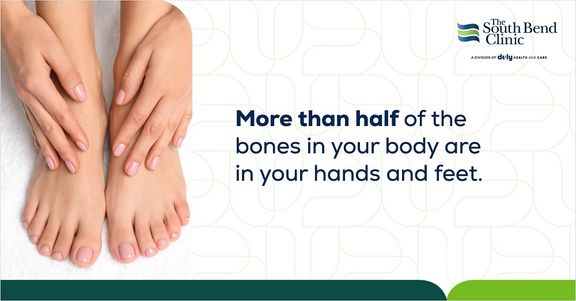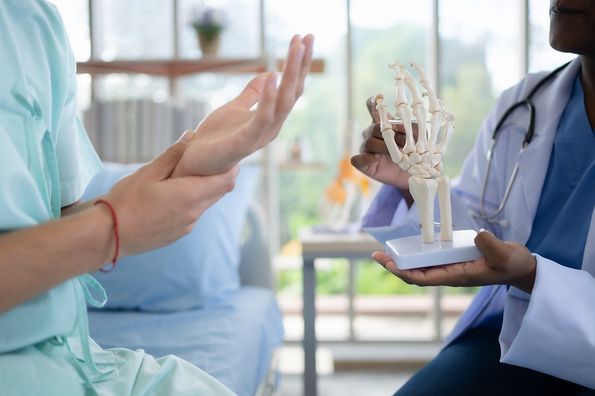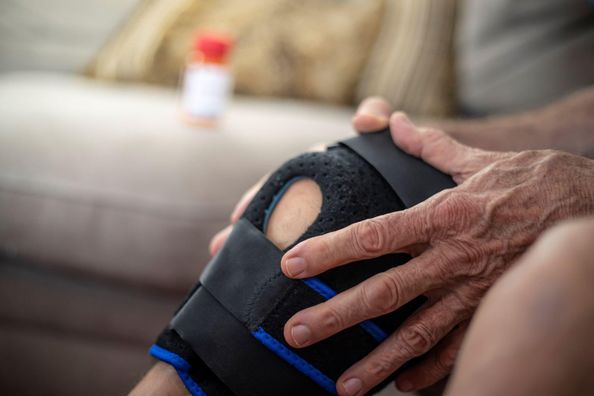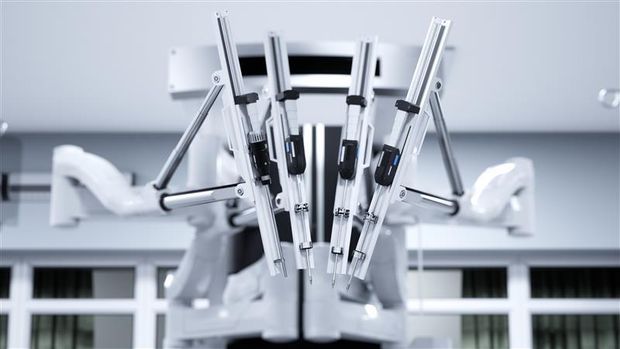Has pain in your bones ever alerted you that a storm is coming? Have you ever wondered if men truly can’t get osteoporosis? Have you heard that your bones regrow every few years?
There are many fascinating facts about bones, but not everything you’ve heard about them is true. Play this game of “True or False” to test your bone knowledge.
True or False: Your Bones Can Tell You When a Storm Is Coming.
Answer: True.
If you haven’t experienced this, you might be raising an eyebrow. But when someone says that their bones can feel a storm coming, they might be onto something.
When the weather gets worse, atmospheric pressure decreases and presses less on the body. This can allow tissue in your bones to swell, leading to aches in your joints (where bones meet). If the pressure drops suddenly – which can happen with storms – the aching may be more noticeable. These fluctuations in air pressure can make you feel the weather changing, especially if you have a condition like arthritis.
True or False: Osteoporosis Only Affects Women.
Answer: False.
Osteoporosis is when your bones become thin, weak, and more likely to break. Women are significantly more likely to develop osteoporosis than men. This is because they typically have smaller and thinner bones, and the loss of estrogen during menopause can speed up bone loss.
However, that doesn’t mean that men can’t get it.
- About 2 million men in the US have osteoporosis, and 12 million are at risk for developing it.
- Up to 1 in 4 men who are 50 or older will break a bone because of osteoporosis.
- A man over age 50 has a higher likelihood of breaking a bone because of osteoporosis than of getting prostate cancer.
Read on Duly Health and Care: What in the World Is a Bone Density Scan — And Do I Need One?
True or False: Babies are born with all of their bones.
Answer: Sort of.
Babies are actually born with more bones than an adult.
Most adults have 206 bones. Babies are born with anywhere from 275 to 300 bones. The extra bones eventually fuse together, bringing the total bone count down. This process ends by about age 25. At that point, your bones are the same size they will be for the rest of your life.
And here’s a little fun fact: Coming in at about 18 inches long, the thigh bone (femur) is the biggest bone in your body. It’s also the strongest one – it can support as much as 30 times your body weight.
Read on Duly Health and Care: Growing Pains
True or False: Most of an Adult’s Bones Are in Their Hands and Feet.
Answer: True.
Your hands and feet might seem like small parts of your body, but they are packed with bones. Each hand (including your wrists and fingers) has 27 bones, while each foot has 26 bones. That brings the grand total of bones in your hands and feet to 106.

True or False: Bones Are the Hardest Substance in the Body.
Answer: False.
That honor belongs to tooth enamel. Tooth enamel is the outer covering of your tooth, and it helps protect against cavities and damage.
There is a common myth that teeth are bones. However, bones are made of cartilage. They contain bone marrow, which is a soft, fatty tissue in your bones where blood cells form. Also, if you break a bone, it can sometimes heal itself.
On the other hand, teeth do not have cartilage or bone marrow. If you break a tooth, you will need to get it fixed – it can’t heal on its own.
True or False: Broken Bones Can Regrow.
Answer: True.
Broken bones can grow back. It can take a while to fully heal from a broken bone, but the new bone begins growing within just a few weeks.
Some broken bones require surgery, but many can heal on their own. However, the healing process is the same no matter what.
True or False: Your Bones Regenerate Every 10 Years.
Answer: True.
When your skeleton forms and grows into the adult size, it’s called modeling. But bone formation doesn’t stop there. Once your body is done modeling, it goes through a process called remodeling (also called regenerating). This happens about every 10 years.
During remodeling, your body replaces old pieces of bone with new, fresh bone tissue. This ensures that your bones stay strong and can supply calcium to your body.
While remodeling keeps your bones strong, it can lead to problems as you age. The remodeling process can become unbalanced as you get older and end up causing loss of bone structure and strength. Eventually, this can lead to bone diseases like osteoporosis.
Also read: Tips for Maintaining Wellness at Every Age
True or False: Every Bone in the Body Is Connected to Another.
Answer: Almost True.
Of your 206 bones, 205 of them are connected to at least one other bone. The exception is a horseshoe-shaped bone called the hyoid. Since it isn’t connected, it is sometimes called a “floating bone.” Instead of being supported by bones, it is held in place by cartilage, muscles, and ligaments (bands of tissue).
The hyoid sits at the front of your neck between your lower jaw and the thyroid cartilage (the tissue that protects your vocal cords). It helps you speak, swallow, and breathe and supports structures like the tongue and throat.
True or False: You Can Protect Your Bones With Lifestyle Changes.
Answer: True.
There are some factors that affect bone health that you can’t control, like genetics and race. But there are plenty of things you can do to protect your bones, such as:
- Eating foods rich in calcium and vitamin D
- Getting regular physical activity
- Limiting alcohol
- Quitting smoking
Taking care of your bone health might not seem like your top priority, but it’s important to stay healthy and safe as you get older – no bones about it! Ready to take your bone health into your own hands? Schedule an appointment with a South Bend Clinic orthopedic specialist today.
Health Topics:




